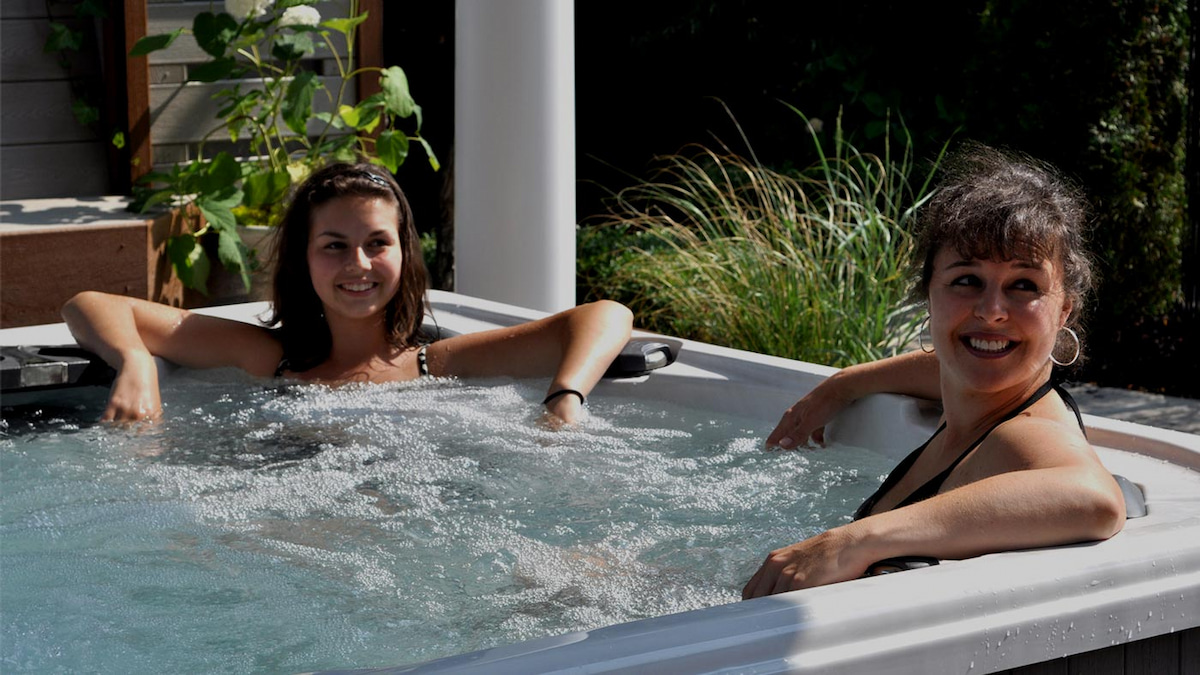The use of water in the treatment of various illnesses, such as arthritis and related rheumatic symptoms, is known as hydrotherapy. Hydrotherapy is distinct from swimming in that it entails specific exercises performed in a warm-water pool. The water is normally 33–36 degrees Celsius, which is warmer than a typical swimming pool.
Hydrotherapy is usually administered in a hospital’s physiotherapy department. The exercises are usually demonstrated by a physiotherapist or a physiotherapist’s assistant with specialised training. Depending on your problems, the focus of the exercises can be changed to help with range of motion or strength.
Hydrotherapy differs from aquarobics in that it focuses on slow, controlled motions and relaxation rather than the more intense aquarobics. However, now with the advanced and upgraded styles of pools and hot tubs made for homeowners around the world, you can bring this healing and extremely relaxing experience to your backyard.
1. Portable Hot Tubs
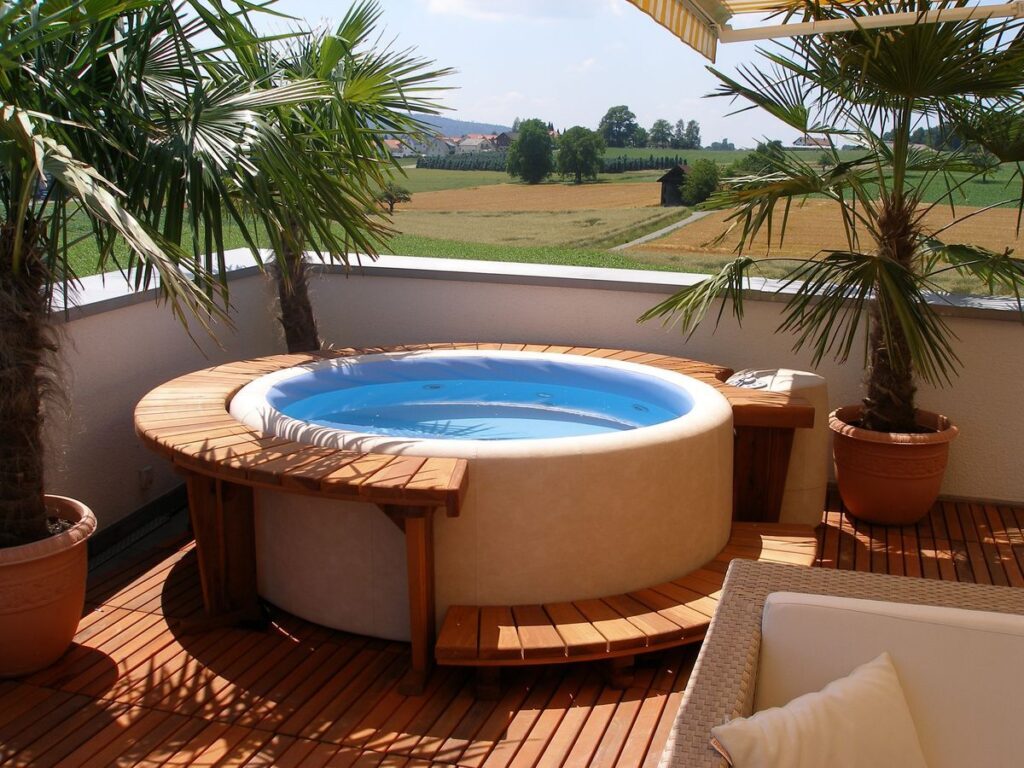
Portable tubs, also known as prefabricated hot tubs, are most likely what spring to mind when you think of residential tubs. The name is a bit of a misnomer with many models because while portable ones can be moved, they are heavy lifting and not exactly easy to reposition.
Portable hot tubes are composed of a range of materials and come in a variety of sizes. The majority are long-lasting and energy-efficient. They are considerably expensive, while higher-end improvements may boost the price. By building your own deck around this tub, you now have a unique design at a lower cost.
2. In-Ground Tubs
In-ground tubs, which are most typically placed alongside a swimming pool, must be installed by a professional, which comes at a premium price. Still, they can provide years of fun while also increasing the value of your home in the long run.
In-ground hot tubs can also be customized to meet your wants and needs, and their cost is between $12,000 and $20,000 on average. With so many installing possibilities, you could be able to spend more or less this amount.
3. Swim-and-Spa Package
Why not have both if you can’t decide between a pool and a hot tub? You get an exercise pool on one side and a hot tub on the other with a swim-spa combination model. This, predictably, takes up more room than freestanding tubs. That also means you’ll need a sturdy, reinforced foundation to support the swim spa pool combo. If you so desire and have the necessary space, they can be installed indoors, which is convenient for those who want to swim throughout the winter.
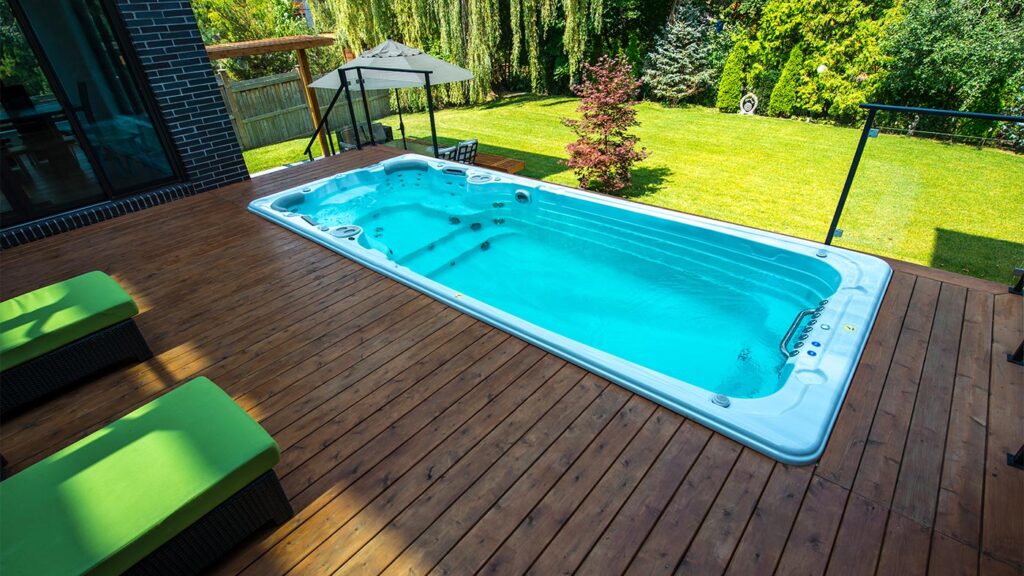
Swim-spa combos, like prefabricated tubs, are technically movable. Moving them, on the other hand, is a difficult task. Due to the amount of water and electricity required to heat both sides, swim-spa combos are very expensive to run. However, a swim-spa combo can cost anywhere from $7,000 to $30,000 to buy and instal, which is far less than the cost of an in-ground pool.
4. Hot Tubs with a Rotational Mold
Rotationally moulded tubs are a fantastic budget choice because they outperform the competition in several ways. First of all, unlike other prefabricated tubs, they are extremely portable weighing around 130kg when empty. Rotationally moulded hot tubs have contoured chairs and are less prone to breakage than inflatable counterparts.
Rotationally moulded (or rotomould) models range in price from $2,500 to $6,000. Although the price, mobility, and durability of these models may be enticing, keep in mind that they offer fewer upgrade options, a lower-end aesthetic, and aren’t very energy-efficient.
5. Traditional Wooden Tubs
Wooden tubs are the original type, however, they are becoming less popular these days. Alternative heating sources, such as a wood-fired heater or a gas heater, may be possible with wooden tubs. Unlike electricity-dependent types, wooden hot tubes can be installed off the grid. Wooden tubs range in price from $3,500 to $11,000, depending on the heating source, wood type, and size.
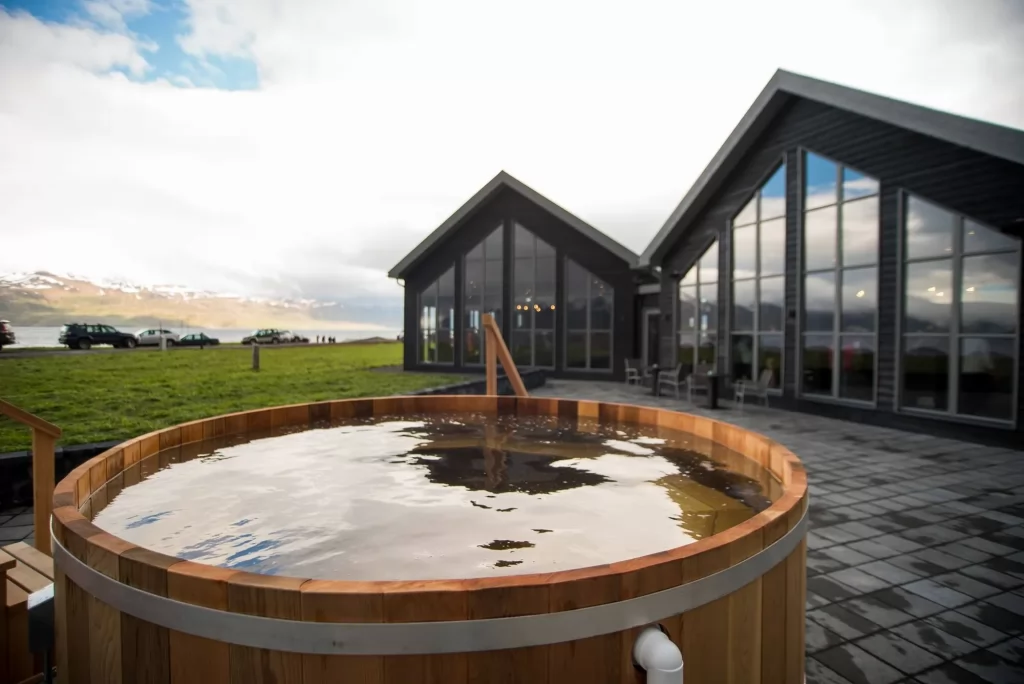
One of the most significant disadvantages of a wooden spa hot tub is that the seats are less comfortable and the technology may be less advanced. Wood is also less efficient in retaining heat than other prefabricated varieties, making wooden designs less energy efficient. In addition, they are more prone to repairs, which can be costly however they certainly have an appealing aesthetic appearance.
6. Inflatable Hot Tubs
Inflatable models are the best value on the market, and they’re a great way to get started with the hot tub lifestyle (especially if you have children). Don’t expect all of the luxurious experience, though. While most inflatables have “jets,” these are bubbles that only work when the heat is turned off.
On the plus side, they don’t require a 220/240-volt outlet. Although they can be used outside, most manufacturers recommend that they not be used below a specific temperature. As a result, during the winter months, when most people desire to utilise a hot tub, you may need to deflate and store your inflatable hot tub.
Is hydrotherapy really working?
Hydrotherapy has been proved in scientific research to increase strength and general fitness in persons with various forms of arthritis. The workouts can be adapted to your specific needs, allowing you to progressively increase your stamina and flexibility.
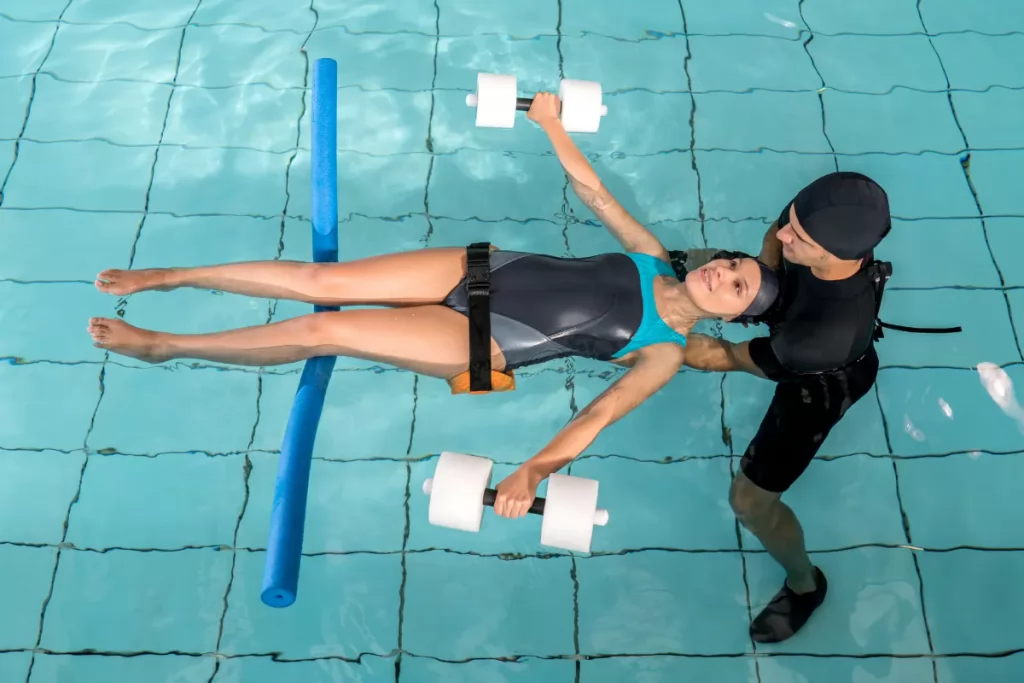
Because of the added assistance provided by the water, you may feel like you can perform more activity than usual, so be careful not to overdo it. You may feel fatigued after treatment due to the exercise and the temperature of the water, but this is typical. Hydrotherapy is one of the safest therapies for arthritis and back pain in general.
Also, don’t forget about the psychological relief you get simply by being in warm water. Many studies have proven again and again that water has calming effects on the nervous system of human beings, and helps relieve accumulated stress.
